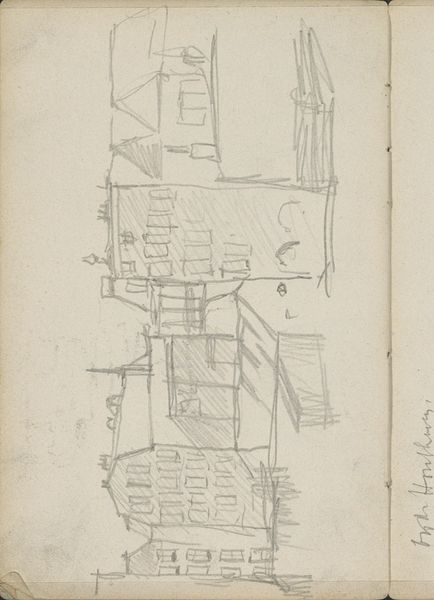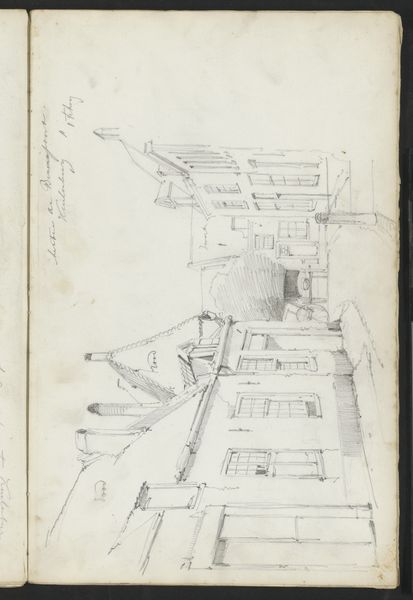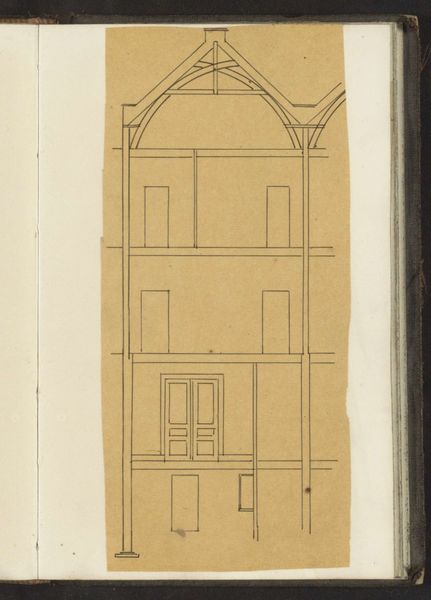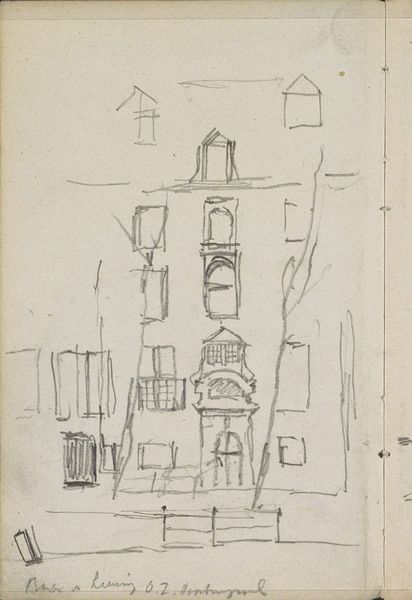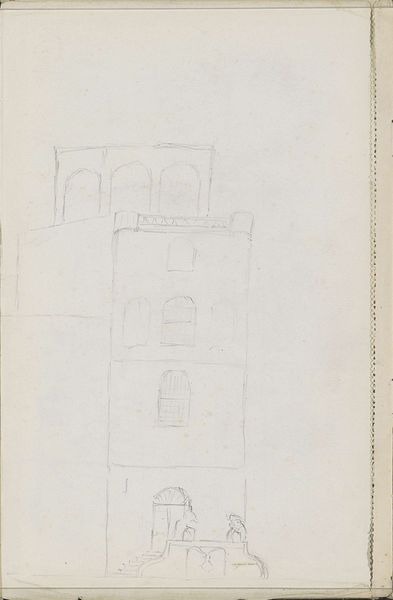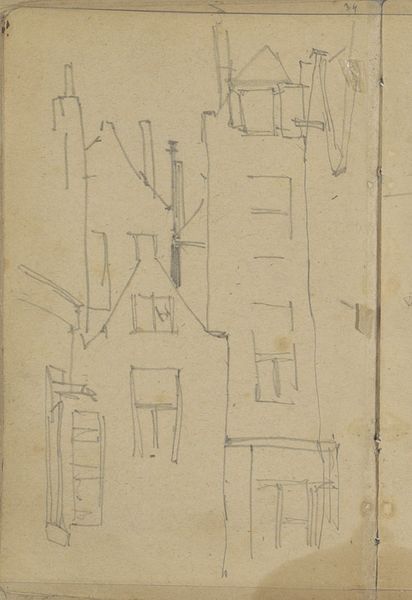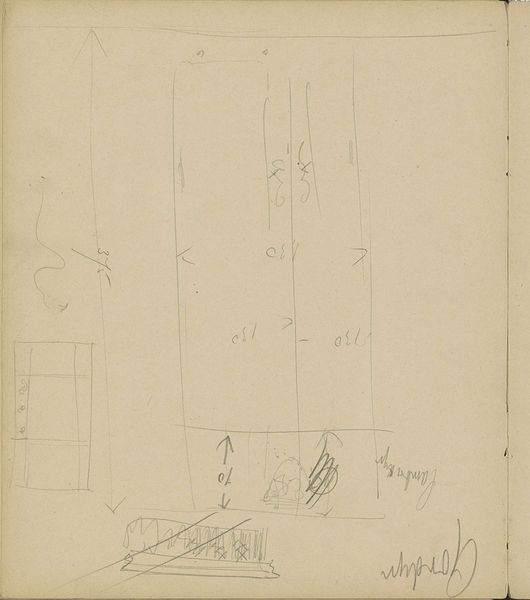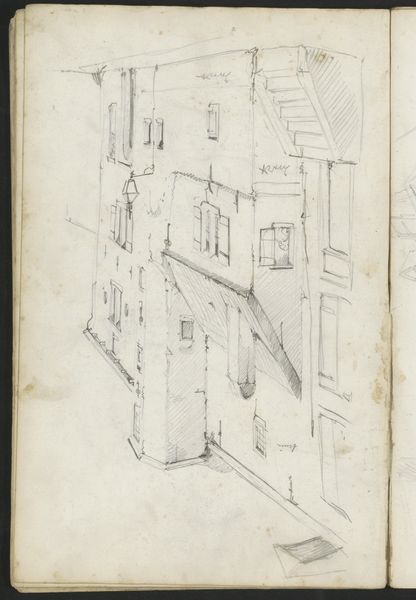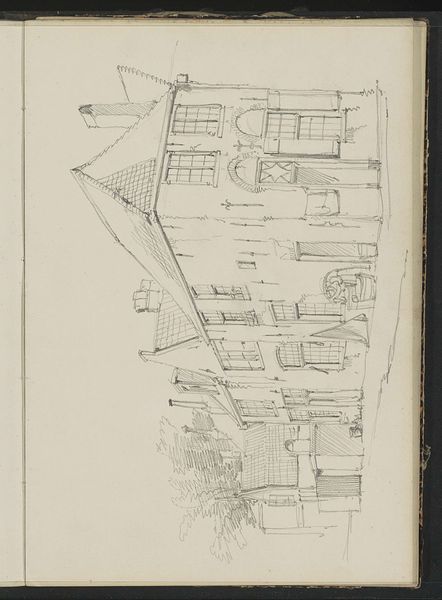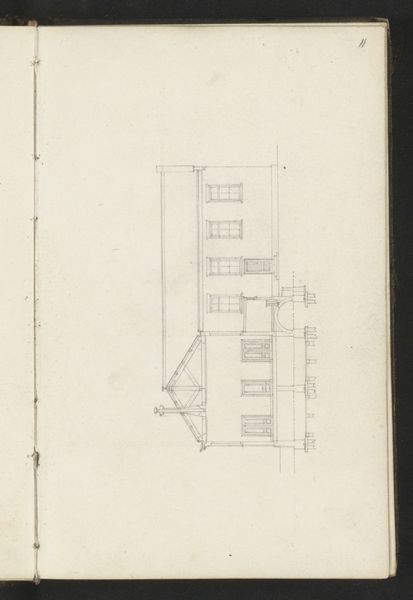
Ontwerp voor de deuren van de eetsalon van het schip 'Grotius' c. 1906
0:00
0:00
careladolphlioncachet
Rijksmuseum
drawing, pencil, architecture
#
drawing
#
aged paper
#
hand written
#
art-nouveau
#
sketch book
#
hand drawn type
#
personal sketchbook
#
idea generation sketch
#
sketchwork
#
pencil
#
sketchbook drawing
#
storyboard and sketchbook work
#
sketchbook art
#
architecture
Copyright: Rijks Museum: Open Domain
Editor: Here we have Carel Adolph Lion Cachet’s "Ontwerp voor de deuren van de eetsalon van het schip 'Grotius'," a pencil drawing from around 1906. It has a certain preliminary feel to it, almost like looking over the artist's shoulder while he's in the initial stages of designing. What jumps out at you? Curator: It's fascinating to see this as a document of the design process. The Art Nouveau style is evident, but I'm drawn to the raw materiality of the sketch. We see the labor of the hand, the immediacy of the pencil on paper. What does it tell us about the commissioning of art for maritime transport? How does the material choice - a simple pencil sketch - democratize the artistic process usually associated with elitism of seafaring? Editor: I hadn't considered the social aspect! It's just a sketch, but it was meant to become something much more ornate, more functional. Was there a specific significance to choosing this Art Nouveau style for a ship like the 'Grotius'? Curator: Absolutely. Art Nouveau was, in its own way, a rejection of industrial standardization. On a ship intended for luxury travel and trade, perhaps the curves and individualized forms offered passengers and makers an antidote to the mechanization of modern life and a physical manifestation of the wealth onboard. Editor: So the design itself carries a commentary on the social and economic forces at play? Curator: Precisely. And even this sketch, seemingly ephemeral, plays a role in the production and consumption of art. The type of paper used or the lead in his pencil… the cost all would dictate his level of access. Editor: I see what you mean. It makes you consider how the simplest materials can tell such complex stories! Thanks for opening my eyes. Curator: Indeed. Thinking about materials helps us better understand the artist, the patron and the wider world of art making.
Comments
No comments
Be the first to comment and join the conversation on the ultimate creative platform.
